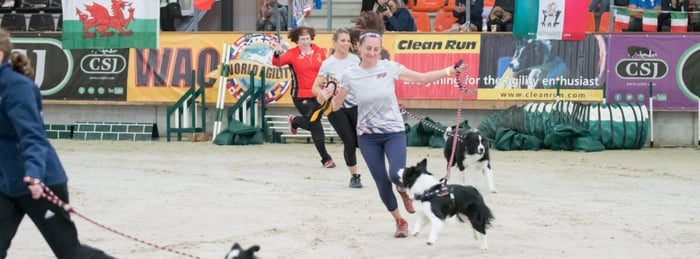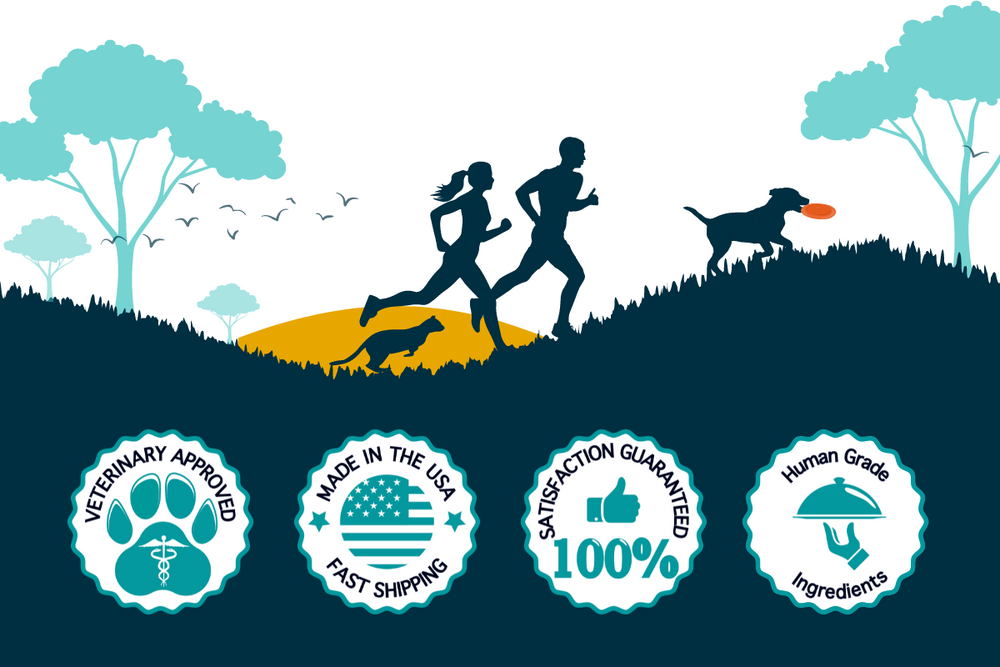Intro to Dog Agility 2: How to Get Started with Dog Agility Training
One of the best things about dog agility is that most any dog can do it, and most every dog loves it. So long as a dog is not unsafe around people and other dogs, they can train and play agility.
If you want to progress to competitions, there are options for dogs of all breeds, sizes, backgrounds, and ages. That being said, it is important to remember that each dog is an individual and the frequency and intensity of training can vary greatly with regard to what each dog can do.
It is important to listen to what your dog is telling you when embarking on your dog agility training journey.
Overview of Dog Agility
Dog agility is a combination of physical and mental activity. Brains and brawn are required. Because agility can help stimulate and develop both of these needs, it is deeply rewarding and satisfying for dogs.
We know that adequate exercise is crucial for a dog’s well-being, but engaging a dog’s brain and teaching him to learn and solve problems is much more fulfilling to a dog’s psyche. It gives dogs a sense of “purpose,” a job if you will, which helps them feel fulfilled.
Agility is therefore a good fit for dogs with high energy levels or dogs who need more activity to keep them satisfied. I personally believe that agility can be very therapeutic for dogs.
It can help shy dogs develop confidence, as they feel empowered by learning new things and overcoming challenges.
Finally, agility is a great way to increase the bond between an owner and his or her dog since it revolves around the human and dog working together.

Training and Competition Expectations
While most dogs enjoy doing agility, once competition is introduced, realistic expectations must be established. The intensity and frequency of dog agility training and the handler’s aspirations need to be evaluated based on the individual dog.
Dogs might have fun in their backyard or at the training club, but sometimes the show ring feels overwhelming to them and they don’t want to perform.
Does everyone love public speaking? Do *you*? Not all dogs will excel at the top levels of competition, but this doesn’t mean they can’t do agility. It simply means that these dogs might take longer to become comfortable at trials and some may always prefer to play in training rather than in public.
Agility, as its name implies, is a physical sport and so is demanding on a dog’s body. An older dog might enjoy doing agility, but he may not want to do it so many times a week or for long sessions.
If you have a dog with physical limitations (such as hip dysplasia, limited vision or hearing, or even excess weight), you need to be extra cautious in order to not hurt him or cause injury.
Be sure to ask your instructor or veterinarian on how best to deal with these issues and how to adjust the training plan to fit his needs.
Breeds in Dog Agility
A note on breeds. A dog’s breed or mix of breeds does not determine everything, but it does very much affect a dog’s tendencies, athleticism, and overall drive.
- Dogs bred to work with people will have more natural inclinations to do so and are frequently easier to train because of this motivation.
- Independent dogs can be more of a challenge to convince to engage, but that doesn’t mean they can’t or won’t like it.
- Herding breeds seem to excel in the sport because of their natural instincts toward following motion and taking directions, but these tendencies can also create training challenges specific to dog agility, as these breeds are more prone to chasing the handler or circling around the obstacles.
The structure and athleticism of a dog is correlated to its breed. Since agility is primarily a physical sport, there are differences between dogs’ athleticism. It is not right or fair to expect the same performance across breeds.
I currently own a Chinese Shar-Pei whom I train and compete with in agility. This is not a typical agility breed, and while she definitely enjoys doing it, she doesn’t have endless energy or motivation to keep doing it for long periods of time.
It would also be wrong of me to expect her to beat the Shetland Sheepdogs or sport mixes specifically bred to do agility that compete in her same height categories. Nevertheless, we still have fun and do as much as she likes doing, and we both have a healthy agility relationship.
Dogs that are truly unfit to do agility are those with severe physical problems or dogs that are dangerous to other dogs or people. Since agility is done off leash and competitions and classes are high energy and can be very crowded, it is not fair to anyone—the owner, the others, or even the dog—to be subjected to a dangerous situation.
Nose work, obedience, or rally obedience might be a better fit for dogs with physical limitations, as these are not as physically demanding activities. Unsafe dogs should undergo behavioral training and may or may not progress to being able to play in public. But if they never do, they can always do agility in the privacy and safety of their own backyards.
How to Get Started in Agility
There are many ways to get started in agility. A great way is to find a local dog agility training club or school and join a beginners’ class.
I found my very first agility class through the local community center, where the instructor would haul the equipment to a local park on Saturday mornings.
I later joined a dog sports club and started beginner classes with them on Monday nights. Sometimes facilities have prerequisites for agility classes, such as basic obedience classes. While this might seem boring compared to agility training, without foundational skills such as recalls, stays, and control off leash, agility will take much longer to learn.
Private lessons allow you to progress quickly, but they are not as cost effective as classes. A club or facility will have all the agility equipment, which is unfortunately not cheap to buy. However, if you are handy, you can build your own equipment; plans for DIY are easily found online.
Even if you don’t plan on competing and just want to have fun, it is a good idea to have an experienced teacher's guidance for dog agility training, especially since some of the obstacles are scary to dogs and can be dangerous if not taught properly.
There are certain ways of approaching the training, even certain pieces of training equipment, that are used to effectively and safely teach the dog the obstacle. This doesn’t mean that you can’t train your dog on your own.
There exists more and more online resources, schools, classes, and comprehensive websites that provide high-quality dog agility training and guidance.
As I have mentioned, agility is becoming more and more popular, which fortunately means that there are more and more options and resources.
In the next article, we will talk about how to get started training you and your dog. If you missed Part 1 of this series, go back and check it out now!









